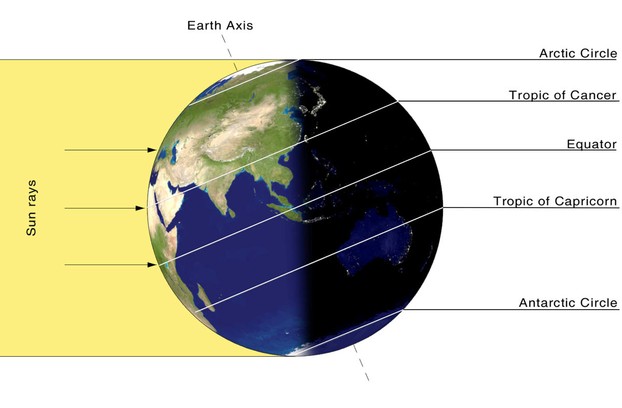"Ananatara Golden Triangle Elephant Camp & Resort." Anantara Hotels, Resorts & Spas. Retrieved August 22, 2014.
- Available at: http://goldentriangle.anantara.com/
Angkasith, Pongsak. 26-28 February 2001. "Coffee Production Status and Potential of Organic Arabic Coffee in Thailand." Scribd. Retrieved August 22, 2014.
- Available at: http://www.scribd.com/doc/18619977/Coffee-Growing-in-Thailand-One-sheet
Associated Press. 7 December 2012. "Coffee from an Elephant's Dung Fills a $50 Cup." Fox News: Lifestyle > Food & Drink. FOX News Network, LLC. Retrieved August 22, 2014.
- Available at: http://www.foxnews.com/leisure/2012/12/07/gimmick-or-gastronomy-elephant-herd-in-thailand-leaving-its-mark-on-exotic/
Boelens, Bo; Watkins, Michael; and Grayson, Michael. 2009. The Eponym Dictionary of Mammals. Johns Hopkins University.
Brault, Len. 30 December 2009. "Coffee from Thailand." I Need Coffee. Retrieved August 22, 2014.
- Available at: http://ineedcoffee.com/coffee-from-thailand/
"Chiang Rai Guide." Anantara Hotels, Resorts & Spas. Retrieved August 22, 2014.
- Available at: http://goldentriangle.anantara.com/Chiang-Rai-Guide/
CNNgo Staff. 12 October 2012. "Would You Pay US$50 for a Cup of Elephant Dung Coffee?" CNNGo Travel: Asia Pacific ?> Thailand. Retrieved August 22, 2014.
- Available at: http://travel.cnn.com/bangkok/drink/why-worlds-most-expensive-coffee-comes-elephants-butt-426056
"Coffee: Beans Picked from Elephant Dung Make World's Priciest Brew." Vancouverdesi: December 10, 2012. Postmedia Network Inc.: Pacific Newspaper Group. Retrieved August 22, 2014.
- Available at: http://www.vancouverdesi.com/business/asia/coffee-beans-picked-from-elephant-dung-make-worlds-priciest-brew-gallery/395474/
"Coffee from Thailand." Coffee Forums: Coffee Addicts > Coffee Beans & Espresso Beans. Retrieved August 22, 2014.
- Available at: http://www.coffeeforums.com/forum/coffee-beans-espresso-beans/7510-coffee-thailand.html
"Coffee Production in Thailand." Jamala Foods. Retrieved August 22, 2014.
- Available at: http://www.jamalafoods.com/coffee-production-in-thailand/
Craker, Lee. 16 February 2014. The Last Elephant: The Fight to Save the Elephants of Thailand. CreateSpace Independent Publishing.
"Duang Dee Hill Tribe Coffee Is Proudly Produced in Northern Thailand." Northern Thailand. Retrieved August 22, 2014.
- Available at: http://www.northernthailand.com/duangdeecoffee/
"Elephant Camp." Anantara Hotels, Resorts & Spas. Retrieved August 22, 2014.
- Available at: http://goldentriangle.anantara.com/elephantcamp.aspx
"Elephant Dung Coffee: Smooth, Rich, Expensive." ABC News: Now. Yahoo!-ABC News Network. Retrieved August 22, 2014.
- Available at: http://abcnews.go.com/Nightline/video/elephant-dung-coffee-smooth-rich-expensive-18734728
Gecker, Jocelyn. 7 December 2012 (Updated 23 November 2013). "Elephant Dung Coffee: An Exotic Brew at $50 a Pop." Komo News. Seattle, WA: Sinclair Interactive Media, LLC. Retrieved August 22, 2014.
- Available at: http://www.komonews.com/news/offbeat/Elephant-dung-coffee-An-exotic-brew-at-50-a-pop--182539711.html
Gecker, Jocelyn. 8 January 2013. "Elephant-Dung Coffee Lures Intrepid Foodies to Thailand." USA Today. Retrieved August 22, 2014.
- Available at: http://www.usatoday.com/story/travel/destinations/2012/12/28/elephant-dung-coffee-intrepid-foodies-thailand/1797347/
Gecker, Jocelyn. 7 December 2012 (Updated February 6, 2013). "Elephant Dung Coffee Well-Received by Tasters." The Huffington Post. Retrieved August 22, 2014.
- Available at: http://www.huffingtonpost.com/2012/12/07/elephant-dung-coffee_n_2257628.html
"The Golden Triangle Asian Elephant Foundation." Helping Elephants. Retrieved August 22, 2014.
- Available at: http://www.helpingelephants.org/
"How to Serve and Experience Black Ivory Coffee." Black Ivory Coffee Company. Retrieved August 22, 2014.
- Available at: http://www.blackivorycoffee.com/#!how-to-serve-and-experience-/cqr1
"The Highlands Regions of Thailand." Route 66 Coffee Roasters. Retrieved August 22, 2014.
- Available at: http://route66coffee.co/the-highlands-regions-of-thailand
Lila, Muhammad. 14 March 2013. "Elephant Coffee, Smooth, Rich and Expensive." ABC News: Nightline. Retrieved August 22, 2014.
- Available at: http://abcnews.go.com/Business/elephant-dung-coffee-smooth-rich-expensive/story?id=18730668
Lister, Adrian. 2004. "African Elephant: Loxodonta africana." Pp. 178-179 in Grzimek's Animal Life Encyclopedia, Second Edition. Volume 15: Mammals IV, edited by Michael Hutchins, Devra G. Kleiman, Valerius Geist, and Melissa C. McDade. Farmington Hills, MI: Gale Group, Inc., division of Thomson Learning Inc.
Lister, Adrian. 2004. "Asian Elephant: Elephas maximus." P. 178 in Grzimek's Animal Life Encyclopedia, Second Edition. Volume 15: Mammals IV, edited by Michael Hutchins, Devra G. Kleiman, Valerius Geist, and Melissa C. McDade. Farmington Hills, MI: Gale Group, Inc., division of Thomson Learning Inc.
Luttinger, Nina; and Dicum, Gregory. 24 April 2006. The Coffee Book: Anatomy of an Industry from Crop to the Last Drop. New Press Bazaar Book.
Marcone, Massimo F. 2004. "Composition and Properties of Indonesian Palm Civet Coffee (Kopi Luwak) and Ethiopian Civet Coffee." Food Research International 37(9):901-912.
Marcone, Massimo F. March 2005. "Corrigendum to 'Composition and Properties of Indonesian Palm Civet Coffee (Kopi Luwak) and Ethiopian Civet Coffee'." Food Research International 38(2):233.
Mestanza, Jean-Pierre. 30 November 2012. "Phuket: Thai Hotel Brews Up Elephant Dung Coffee." The Phuket News. Retrieved August 22, 2014.
- Available at: http://www.thephuketnews.com/thai-hotel-brews-up-elephant-dung-coffee-35027.php
"Our Coffee." Mai Thai. Retrieved August 22, 2014.
- Available at: https://maithaicoffee.com/Our_Coffee.html
Pais, Allen J. "Elephant Dung Coffee Beans." EcoFriendly Coffee > Biodiversity. December 12, 2013. Michael Allen Smith. Web. ecofriendlycoffee.org
- Available at: http://ecofriendlycoffee.org/elephant-dung-coffee-beans/
Prendergast, Mark. 28 September 2010. Uncommon Grounds: The History of Coffee and How It Transformed Our World. New York, NY: Basic Books.
Rice, Robert; and Bedoya, Mauricio. September 2010. "The Ecological Benefits of Shade Grown Coffee: The Case for Going Bird Friendly." Smithsonian National Zoological Park: Smithsonian Migratory Bird Center. Retrieved August 22, 2014.
- Available at: http://nationalzoo.si.edu/scbi/migratorybirds/coffee/bird_friendly/ecological-benefits-of-shade-grown-coffee.cfm
Sanghvi, Vir. 15 October 2013. "Vir Sanghvi Tastes the World's Most Expensive Elephant Dung Coffee." NDTV Convergence Limited: Video > Freshly Brewed: Coffee for the Soul. Retrieved August 22, 2014.
- Available at: http://www.ndtv.com/video/special/vir-sanghvi-tastes-the-world-s-most-expensive-elephant-dung-coffee-972/294929
Sullivan, Michael. 20 August 2014. "Coffee Flop: Elephants Make the Priciest Beans." Minnesota Public Radio (MPR) News. Retrieved August 22, 2014.
- Available at: http://www.mprnews.org/story/2014/08/21/coffee-elephant-dung?refid=0
Sullivan, Michael. 20 August 2014. "No. 1 Most Expensive Coffee Comes from Elephant's No. 2." NPR: The Salt What's on Your Plate. Retrieved August 22, 2014.
- Available at: http://www.npr.org/blogs/thesalt/2014/08/20/340154271/no-1-most-expensive-coffee-comes-from-elephants-no-2
Tepper, Rachel. 15 October 2012 (Updated 17 October 2012). "Elephant Dung Coffee: World's Most Expensive Brew Is Made with Pooped-out Beans." The Huffington Post. Retrieved August 22, 2014.
- Available at: http://www.huffingtonpost.com/2012/10/15/elephant-dung-coffee-black-ivory_n_1968096.html
"Thai Coffee, 'Oleang'." ImportFood. Retrieved August 22, 2014.
- Available at: http://importfood.com/thaiicecoffee.html
"Thailand Brewing Methods." Route 66 Coffee Roasters. Retrieved August 22, 2014.
- Available at: http://route66coffee.co/thailand-brewing-methods
"Thailand History in Coffee Cultivation." Route 66 Coffee Roasters. Retrieved August 22, 2014.
- Available at: http://route66coffee.co/thailand-history-in-coffee-cultivation
Titus, Dr. Anand; and Pereira, Geeta N. 1 October 2004. "Coffee Forest Symbiosis." EcoFriendly Coffee. Retrieved August 22, 2014.
- Available at: http://ecofriendlycoffee.org/coffee-forest-symbiosis/
Titus, Dr. Anand; and Pereira, Geeta N. 1 September 2007. "Coffee Forests: A Gateway to Wildlife." EcoFriendly Coffee. Retrieved August 22, 2014.
- Available at: http://ecofriendlycoffee.org/coffee-forests-a-gateway-to-wildlife/
Titus, Dr. Anand; and Pereira, Geeta N. 15 November 2010. "Coffee Forests and Green National Acconts." EcoFriendly Coffee. Retrieved August 22, 2014.
- Available at: http://ecofriendlycoffee.org/coffee-forests-and-green-national-accounts/
Titus, Dr. Anand; and Pereira, Geeta N. 9 September 2011. "Coffee Forests and Wildlife." EcoFriendly Coffee. Retrieved August 22, 2014.
- Available at: http://ecofriendlycoffee.org/coffee-forests-and-wildlife-credits/
Titus, Dr. Anand; and Pereira, Geeta N. 1 July 2007. "Coffee Hotspots: An Inventory of Biodiversity." EcoFriendly Coffee. Retrieved August 22, 2014.
- Available at: http://ecofriendlycoffee.org/coffee-hotspots-an-inventory-of-biodiversity/
Titus, Dr. Anand; and Pereira, Geeta N. 1 July 2008. "Human Elephant Conflict Inside Coffee Forests." EcoFriendly Coffee. Retrieved August 22, 2014.
- Available at: http://ecofriendlycoffee.org/human-elephant-conflict-inside-coffee-forests/
Ukers, William H. 1922. All About Coffee. New York, NY: The Tea and Coffee Trade Journal Company.
- Available via Project Gutenberg at: http://www.gutenberg.org/files/28500/28500-h/28500-h.htm
Wilson, Don E.; and Cole, F. Russell. 2000. Common Names of Mammals of the World. Washington, D.C.: Smithsonian Institution Press.
Wilson, Don E.; and Reeder, DeeAnn M. (editors). 2005. Mammal Species of the World: A Taxonomic and Geographic Reference (3rd ed), Johns Hopkins University Press.
Wrobel, Murray (Editor). 2007. Elsevier's Dictionary of Mammals: Latin English German French Italian. Oxford, U.K.: Elsevier B.V.




















 Are Hawaiian Huakai Po Nightmarchers Avenging Halloween Thursday?on 10/02/2024
Are Hawaiian Huakai Po Nightmarchers Avenging Halloween Thursday?on 10/02/2024
 Mailing Addresses for 2023 Form 4868 Extending 1040 and 1040SR April 15, 2024, Due Dateon 04/15/2024
Mailing Addresses for 2023 Form 4868 Extending 1040 and 1040SR April 15, 2024, Due Dateon 04/15/2024
 Mailing Addresses for 2023 Forms 1040 and 1040SR Filed in 2024on 04/15/2024
Mailing Addresses for 2023 Forms 1040 and 1040SR Filed in 2024on 04/15/2024
 Mailing Addresses for 2022 Form 4868 Extending 1040 and 1040SR April 18, 2023, Due Dateon 04/13/2023
Mailing Addresses for 2022 Form 4868 Extending 1040 and 1040SR April 18, 2023, Due Dateon 04/13/2023



Comments
Blake, Thank you for honoring my tribute to your coffee and your benevolence to elephants, mahouts, and the environment with your visit and comments.
Also I am especially appreciative that you are sharing this on the Black Ivory Coffee Facebook page.
I was disappointed not to find any Black Ivory Coffee-related dung images on the Internet that I could include (I am conscientious about the use of non-copyrighted images). I included the image to give an idea of how it looks.
I also released an article on "Sankt Gallen Beer of Japan: Black Ivory Coffee and Elephants (Elephas maximus indicus) in Thailand."
Many thanks for all that you do.
This is a very well researched story on Black Ivory Coffee and the region as well. While that photo of the dung is not Black Ivory Coffee everything else is spot on. I am going to share this on the Black Ivory Coffee Facebook page. Great job!